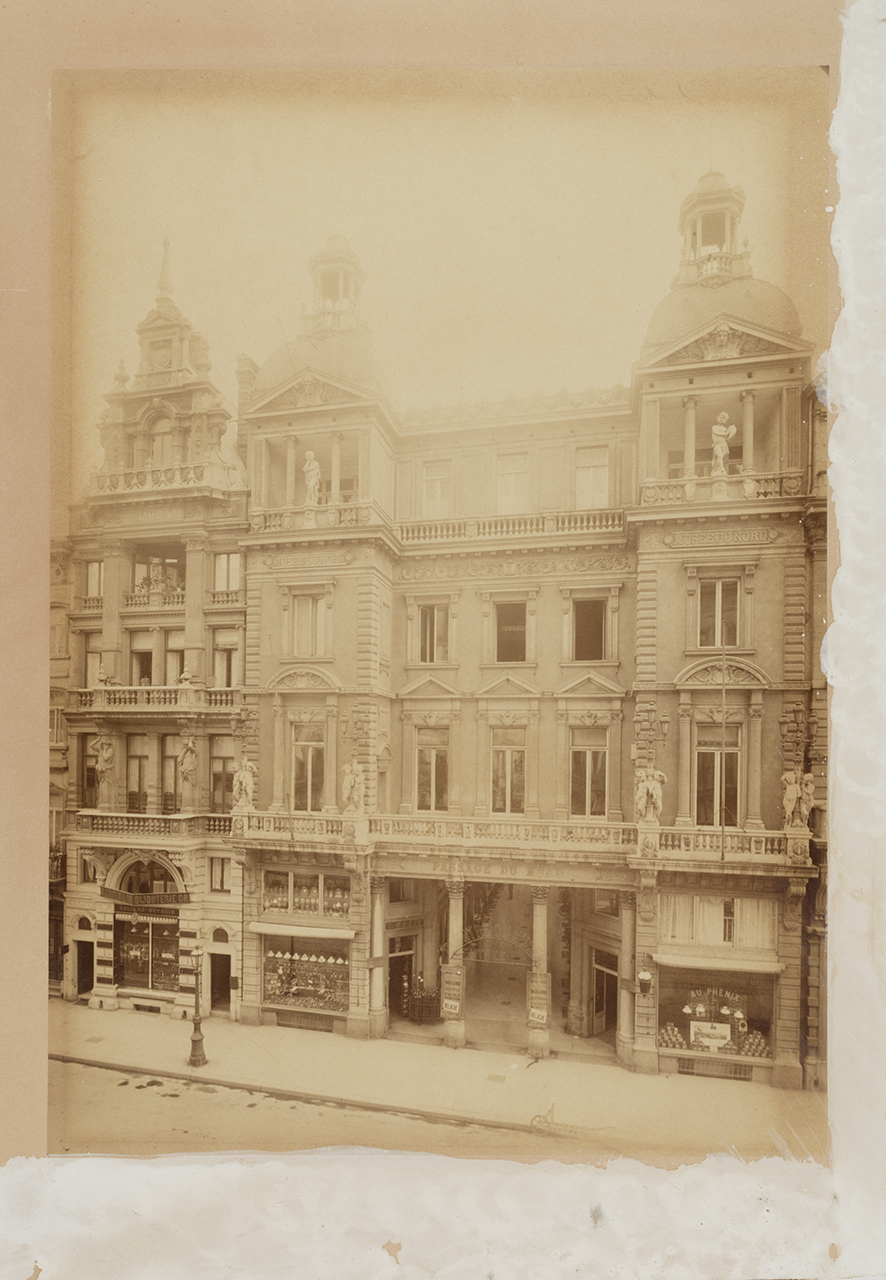Introduction
Almost everyone who lives in Brussels has walked at least once down this arcade, with its beautiful glazed roof and its Baroque statues, linking the Rue Neuve to the Boulevard Adolphe Max, close to the Place De Brouckère. The fashion for shopping arcades began in the nineteenth century in Europe, and in Paris in particular.
Between 1820 and 1860, Brussels was also touched by the craze for shopping arcades: around ten were built in this period in the city, of which only three have survived to the present day - the Royal St Hubert Arcade, the Bortier Arcade and the Passage du Nord. The Passage du Nord was one of the key new buildings that helped to create a “look” for the central boulevards.
Following the example of the first shopping arcade to be built in Belgium (the Passage Lemonnier in Liège), the Passage du Nord is a sort of shopping street decorated with charming caryatids and lavish curves. The use of sculpture on such a large scale was relatively unusual, bears witness to a considerable sense of luxury and helps to bring the perspective down the arcade to life.
Between 1820 and 1860, Brussels was also touched by the craze for shopping arcades: around ten were built in this period in the city, of which only three have survived to the present day - the Royal St Hubert Arcade, the Bortier Arcade and the Passage du Nord. The Passage du Nord was one of the key new buildings that helped to create a “look” for the central boulevards.
Following the example of the first shopping arcade to be built in Belgium (the Passage Lemonnier in Liège), the Passage du Nord is a sort of shopping street decorated with charming caryatids and lavish curves. The use of sculpture on such a large scale was relatively unusual, bears witness to a considerable sense of luxury and helps to bring the perspective down the arcade to life.




